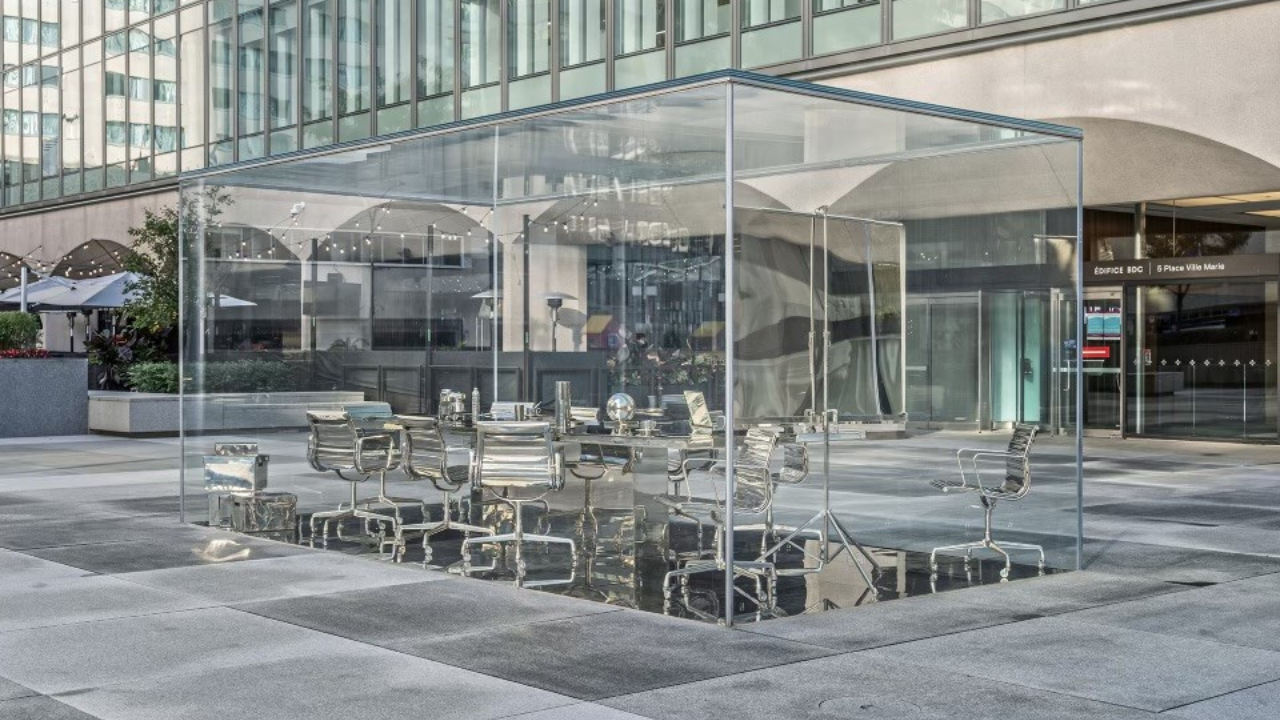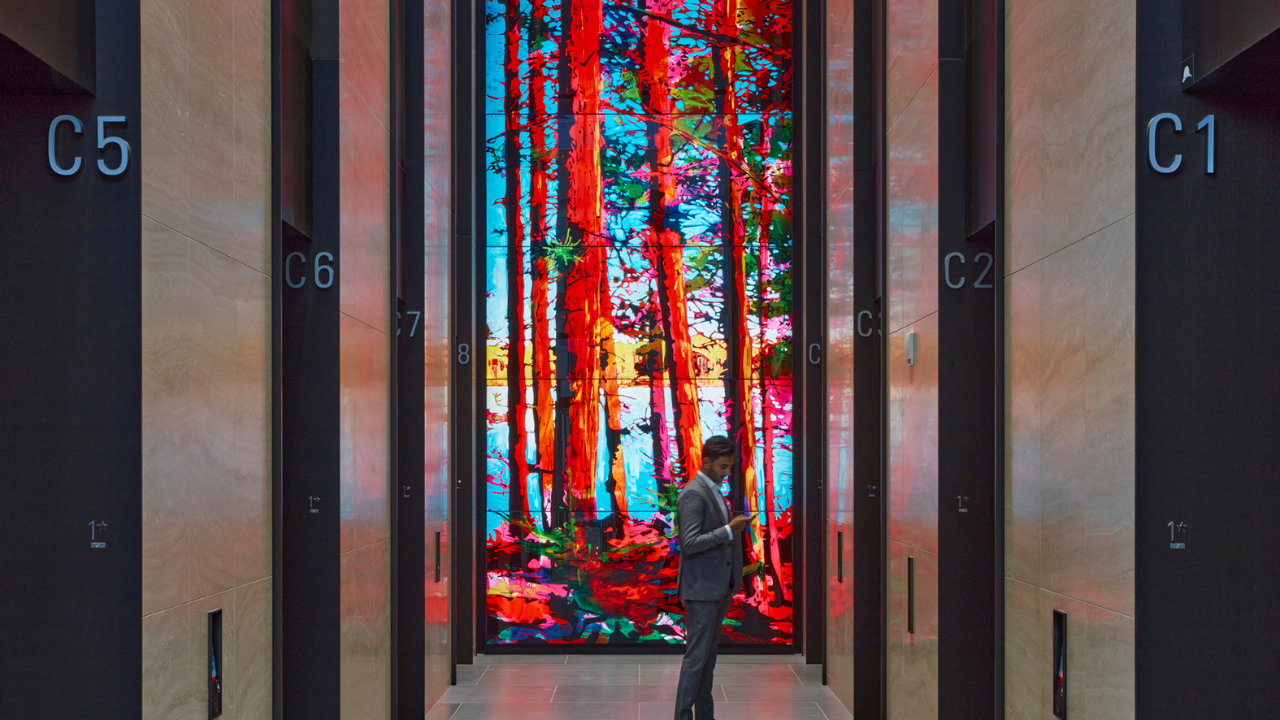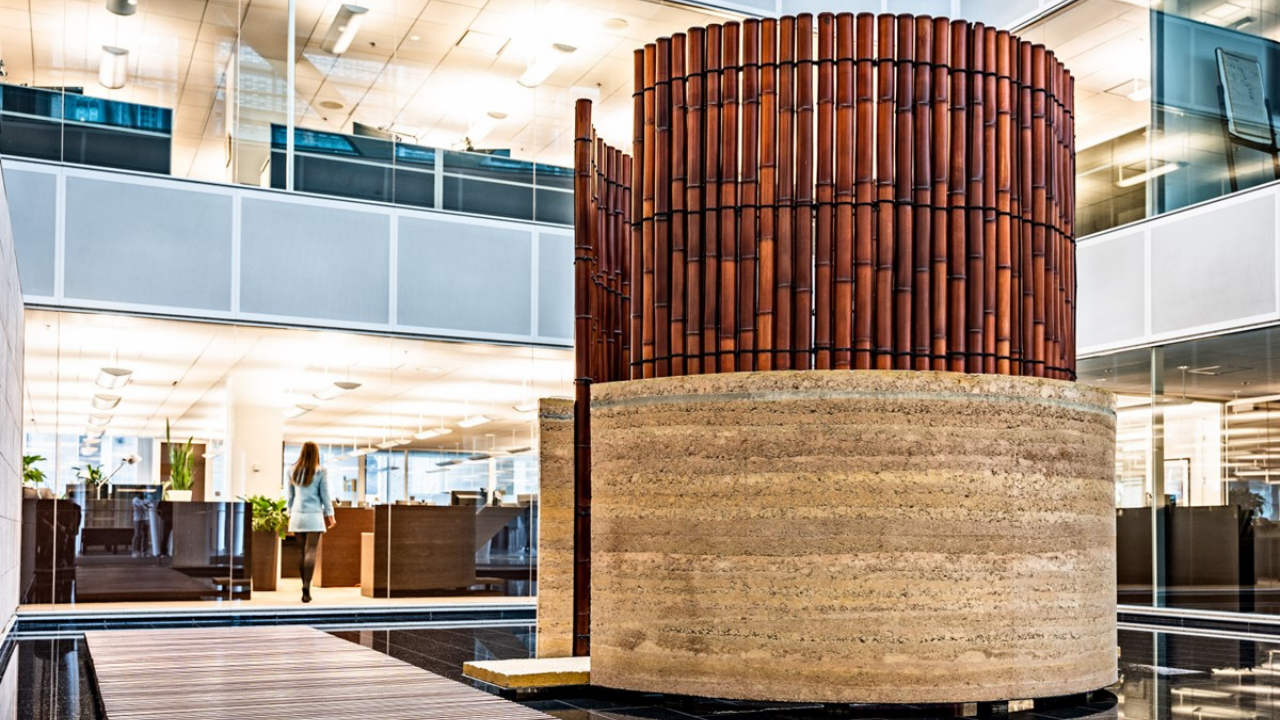For more than 10 years, Ivanhoé Cambridge has been developing a large collection of art in public spaces. In line with its mission, this approach enriches the user experience at its properties and creates strong human relationships. It’s a philosophy that also underpins the development of the private art collection owned by CDPQ and Ivanhoé Cambridge.
International heritage
In a few days, the Esplanade PVM in Montreal will be adorned with The Ring, a unique art installation designed by Claude Cormier + Associés, a Montreal-based creative workshop. This imposing installation, commissioned by Ivanhoé Cambridge, is the last milestone of a project that began in 2017 to revitalize the esplanade and make it a true living space for all Montrealers.
Over the past 10 years, the Company has developed an impressive art collection in the public space, which will be enriched by The Ring. Other examples of Ivanhoé Cambridge’s growing involvement in art are Nicolas Baier’s Auto-Portrait, installed for the 50th anniversary of Place Ville Marie, Ed Pien’s Rêverie at the DUO Towers in Paris and the works by Roxy Paine, Steve Driscoll and Nicolas Baier in the CIBC SQUARE building in Toronto.


“Over the years, this collection of art in public spaces has contributed meaningfully to our heritage as we add to our projects of this type in Canada but also more recently at our properties outside the country,” said Marie-Justine Snider, who, in her role as Curator for CDPQ and its subsidiaries, has been developing the group’s art collection for 18 years.
Art for a lasting human impact
This artistic approach to public space is in line with Ivanhoé Cambridge’s mission and its priority of shaping living spaces centred on the needs of individuals and the occupants of its properties to create value for its communities.
“Art contributes to social transformation,” said Marie-Justine. “It enables us to address important societal issues. It also gives rise to critical thinking, opens us up to different points of view, stimulates the imagination and elicits empathy.”
Art in the public space also helps create a common history with the population. To achieve such a connection with individuals, the choice of artists and works of art is of course vital. Some works are chosen because of a particular affinity with the artist, but most are selected after a competition based on stringent criteria.
“To add value to a building, it’s important that we collect museum-quality works,” Marie-Justine explained. “The purpose of art isn’t mere decoration or marketing. The concept of the permanence of a work of art is essential because we live in an era of spectacle, event and immediacy. It’s important to create a lasting artistic heritage for generations to come.”
A veritable in-house museum
Creating such a heritage is also the common thread of the private collection that graces several floors of the CDPQ and Ivanhoé Cambridge offices in Montreal. In expanding and enriching the collection, Marie-Justine and her colleague, who both hold degrees in art history, leave nothing to chance with a demanding set of specifications.
“We operate like a real museum, with highly rigorous criteria,” Marie-Justine explained. “We pay special attention to a work’s museum qualities and we look for artists who advance their discipline.”
“Our intention is to contribute to Quebec’s cultural and artistic heritage; we want to build a collection that will increase in value over time by focusing on artists who strive to set themselves apart.”
Marie-Justine Snider, Curator for CDPQ and its subsidiaries
Priority is given to works by contemporary artists from Quebec and the rest of Canada, from 1965 to the present day, but the leitmotif is to create a collection that is as multifaceted as possible and gives pride of place to diversity, a theme that is particularly dear to the hearts of Ivanhoé Cambridge and CDPQ.
“We look for diversity in terms of origins, viewpoints and perspectives,” said Marie-Justine. “We acquire mainly works by Quebec artists and we also ensure First Nations and Inuit artists are represented.”
Diversity is also expressed through the profile and experience of the selected artists, with the aim of an astute mix of established and emerging creators.
A powerful vector of social relations
All these works are seen by visitors to our properties but especially by their occupants. In the workplace, contact with art contributes to employee well-being, a major concern for both Ivanhoé Cambridge and its tenants.
“Art has become quite a relevant communication and employee retention tool,” confirmed Marie-Justine. “It allows us to address blind spots in our society, especially through its expression of diversity. Works of art allow us to slow down; they provide a space where we can see and think differently, two essential activities that stimulate innovation and creativity, attributes that we look for in employees. Art creates an experience that, I hope, has a positive impact on our colleagues and their work.”

